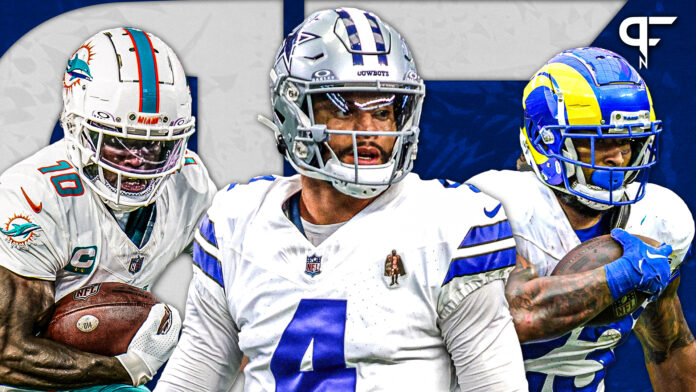Are you new to the world of fantasy football and puzzled by terms like “flex”? Understanding what does flex mean in fantasy football is crucial for making strategic lineup decisions. In this comprehensive guide tailored for newbies, we will delve into the intricacies of the flex position, its significance within the fantasy football landscape, and how to optimize your team by leveraging this versatile roster spot. Whether you’re a rookie looking to grasp the basics or a seasoned player aiming to refine your tactics, this blog will equip you with the knowledge and insights needed to excel in your fantasy football journey.
Introduction to Fantasy Football
Fantasy football is a popular online game where participants act as team owners and build virtual rosters of real-life players from a professional football league. Each week, the fantasy team’s performance is based on the actual statistical performance of the players in their roster during real games. One crucial aspect of fantasy football is understanding unique terms like “Flex,” which impacts roster strategy and player selection.
The Basics of Fantasy Football
At the core of fantasy football is the draft, where participants select players for their team. Throughout the season, team owners manage their rosters by making trades, pickups, and setting lineups to maximize points. Points are earned based on player performance in various statistical categories such as touchdowns, yards gained, and receptions.
Understanding the “Flex” Position
The “Flex” position in fantasy football refers to a roster spot that allows for flexibility in player selection. It typically combines the functionalities of the running back, wide receiver, and sometimes tight end positions. This flexibility enables team owners to optimize their lineup based on matchups and player performance, increasing strategic depth.

Understanding Flex Position
When delving into the world of fantasy football, understanding the Flex position is crucial for optimizing your team lineup. In fantasy football, the Flex position allows managers to choose from a wider range of players beyond traditional positions like quarterbacks, running backs, and wide receivers. This provides more flexibility in team composition and scoring potential.
Types of Flex Positions
The Flex position can come in different forms, such as:
- Flex (RB/WR/TE): This type allows managers to select a running back, wide receiver, or tight end in the Flex position.
- Superflex: In leagues with a Superflex position, managers can even choose a quarterback in the Flex spot, adding another layer of strategy.
Optimizing Your Flex Position
When deciding on your Flex player, it’s essential to consider various factors like matchups, player performance, injuries, and bi-weeks. Analyzing player statistics and trends can help you make informed decisions for maximizing your team’s scoring potential.
Types of Flex Positions
Understanding the different types of flex positions in fantasy football can give you a strategic edge in your gameplay. Flex positions allow for greater flexibility in your lineup, providing options beyond standard positions like Quarterback, Running Back, and Wide Receiver.
1. Flex Position Basics
The flex position in fantasy football refers to a roster spot where you can start either a Running Back, Wide Receiver, or Tight End. It adds versatility to your lineup by allowing you to maximize points based on matchups and player performances.
2. Super Flex
Super Flex: A variation of the flex position that enables you to start a Quarterback in addition to the standard options. This format adds a strategic element as Quarterbacks typically score the most points in fantasy football.
3. Multiple Flex Positions
Multiple Flex Positions: Some leagues offer multiple flex spots, allowing you to start additional skill players beyond the standard lineup requirements. This setup offers more customization and the opportunity to leverage depth on your roster.
Strategies for Flex Spot
When it comes to fantasy football, understanding the importance of the flex spot can make or break your team’s performance. Here are some essential strategies to consider:
Player Flexibility
Having players with versatility in your flex spot can give you an edge over your opponents. Look for players who can contribute in multiple ways, such as running backs who catch passes or wide receivers who can take handoffs.
Matchup Analysis
It’s crucial to analyze matchups each week to determine which player is most likely to excel in your flex spot. Consider factors like the opponent’s defense, injuries, and weather conditions to make an informed decision.
- Check recent performance of players
- Consider home vs. away games
- Look at historical data against specific teams

Impact of Flex Choices on Team Performance
In fantasy football, understanding the impact of flex choices on team performance is crucial. Your flex position allows flexibility in selecting various player types like wide receivers, running backs, or tight ends, contributing significantly to your team’s overall points.
Maximizing Points
Choosing the right player for your flex spot can make a substantial difference in your team’s scoring potential. Strategically mixing and matching players based on matchups can maximize your points.
Positional Flexibility
Having a flex spot allows you to adapt to injuries or bye weeks more easily. Utilize players with different positions to maintain a competitive lineup throughout the season.
Tips for Newbies in Choosing Flex Players
Choosing flex players in fantasy football can be a crucial decision that could make or break your team’s performance. Here are some tips to help newcomers navigate this aspect of the game:
Understand Your League’s Scoring System
Before choosing your flex players, familiarize yourself with your league’s scoring rules. Some leagues may award points differently for various positions, affecting the value of certain players.
Look for Consistent Performers
When picking flex players, prioritize those who consistently put up points week after week. Avoid players with high variance in their performances to minimize the risk of a low-scoring week.
Consider Matchups and Game Scripts
Pay attention to upcoming matchups and game scripts when selecting flex players. Certain players may excel against specific defenses or in games where their team is expected to be playing from behind.
Frequently Asked Questions
-
- What is ‘Flex’ in fantasy football?
- ‘Flex’ in fantasy football refers to a flexible position on your fantasy football roster where you can start either a running back, wide receiver, or tight end. It provides versatility in selecting players for your lineup.
-
- How many flex positions can be in a fantasy football league?
- The number of flex positions in a fantasy football league can vary depending on the league settings. Common options include having one or multiple flex spots where you can start different positions.
-
- Why is understanding ‘Flex’ important for newcomers to fantasy football?
- Understanding ‘Flex’ is crucial for newcomers because it allows them to optimize their roster by strategically choosing players based on matchups and performance. It adds depth to the roster and can impact the overall success in fantasy football.
-
- Can I start a quarterback in the ‘Flex’ position?
- In standard fantasy football leagues, quarterbacks are typically not eligible to be started in the ‘Flex’ position. The ‘Flex’ spot is usually reserved for running backs, wide receivers, and tight ends. However, some leagues have custom settings that may allow quarterbacks in the ‘Flex’ position.
-
- How do I determine which player to start in the ‘Flex’ spot?
- When deciding which player to start in the ‘Flex’ spot, consider factors such as the player’s performance, upcoming matchup, injuries, and bye weeks. It’s essential to analyze each player’s potential to maximize points for your fantasy team.
Unlocking the Mystery of Flex in Fantasy Football
As we conclude our comprehensive guide on “What Does Flex Mean” in fantasy football, it’s clear that understanding this concept is essential for newbies to excel in their fantasy leagues. The flex position offers flexibility and strategic advantages, allowing managers to optimize their lineups based on matchups and player performances.
By grasping the nuances of flex options like RB, WR, and TE, fantasy enthusiasts can elevate their game and maximize scoring potential. Remember, the key is to adapt and be proactive in leveraging the flex spot to gain an edge over opponents.
In summary, mastering the flex position can be a game-changer in fantasy football, so embrace the flexibility it offers and make informed decisions to boost your team’s success. Happy drafting and may your flex choices lead you to victory!





